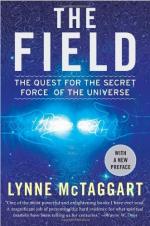|
This section contains 1,131 words (approx. 3 pages at 400 words per page) |

|
Chapter Three, Beings of Light Summary and Analysis
In 1970, Fritz-Albert Popp, biophysicist at the University of Marburg in Germany, thinks he has found a cure for cancer and has been experimenting with the effect of ultraviolet light on lethal carcinogens. The light travels through some chemical compounds unaltered. However, when the light is sent through other compounds, it is re-emitted in an altered stage. He performs his test on some compounds known to cause cancer and others presumed not to. In every instance, the carcinogens absorb the light and change their frequencies. However, this reaction is noted only at a specific wavelength—380 nanometers. The question that faces Popp is why the carcinogens are essentially acting as light scramblers. Popp is intrigued that the natural process of "photo-repair" is successful at the same 380 nanometer wavelength. In "photo-repair" damaged cells are destroyed...
(read more from the Chapter Three, Beings of Light Summary)
|
This section contains 1,131 words (approx. 3 pages at 400 words per page) |

|




